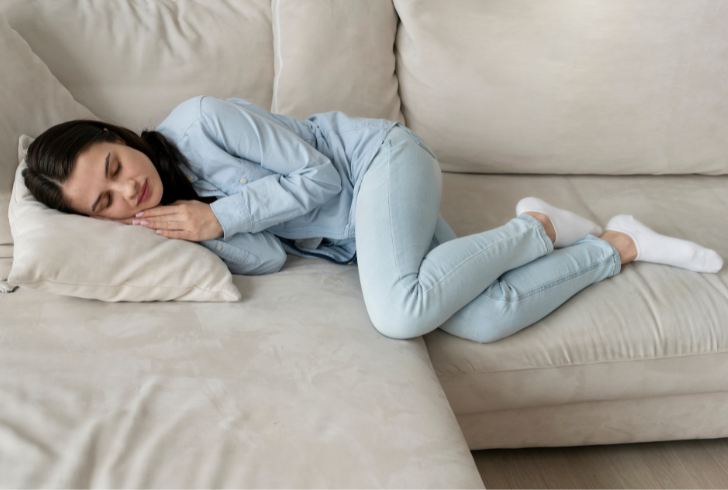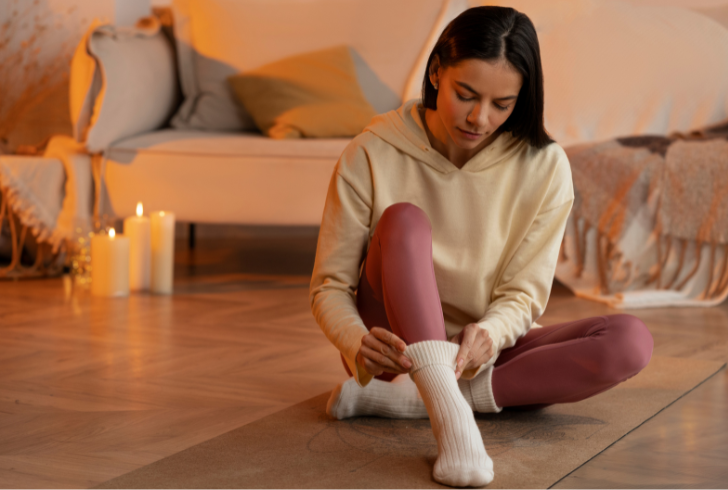Wearing Socks to Bed Can Improve Your Sleep, Says “The Sleep Doctor”
Sleep is deeply influenced by temperature, yet many couples find themselves locked in a nightly battle over bedroom climate. A survey by Vivint Solar, which included 2,000 Americans living with partners, revealed that 75% argue about the home thermostat, and 64% admitted to adjusting it secretly in their favor. This conflict is more common than many realize, but there’s a simple, surprisingly effective solution: wearing socks to bed.
Clinical psychologist and board-certified sleep specialist Michael J. Breus, Ph.D., also known as “The Sleep Doctor,” explains this approach on the mindbodygreen podcast. The concept is straightforward yet impactful. By allowing one partner to wear socks while the other keeps their feet exposed, couples can balance individual comfort without compromising sleep quality.
How Socks Affect Sleep
Feet play a crucial role in regulating overall body temperature. According to the National Sleep Foundation, foot temperature naturally rises before sleep. Wearing socks can enhance this warming, signaling to the brain that it’s time to wind down.
Key findings highlight the benefits of this practice:
1. Warming the feet can lead to longer total sleep duration.
2. It reduces nighttime awakenings.
3. It facilitates smoother transitions into deep sleep phases.
Breus recommends a flexible approach: the partner feeling cold should wear socks, while the one who prefers cooler temperatures can leave their feet uncovered. This method supports the body’s natural circadian rhythm, which involves a gradual drop in core temperature at night.
Temperature Regulation for Couples

Freepik | Wearing socks retains warmth and signals the body to prepare for sleep.
The foot temperature strategy offers a simple and effective solution to disputes over bedroom temperature. Instead of changing the entire room’s climate, focusing on the feet allows each partner to achieve personal comfort.
For those with cold feet, wearing socks helps retain warmth and signals the body that it’s time to sleep. Conversely, exposing warm feet to cooler air supports heat loss and prevents overheating.
This method removes the need to adjust the thermostat, enabling both individuals to rest comfortably without affecting each other’s sleep.
The Science Behind Foot Warming
Warming the feet triggers vasodilation, a process where blood vessels expand, helping the body release heat and stabilize core temperature. This physiological response can improve sleep latency—the time it takes to fall asleep—and enhance overall sleep quality.
Studies have shown that small adjustments in extremity temperature can significantly influence sleep outcomes. By simply wearing socks or leaving feet uncovered, individuals can create an optimal microclimate for restorative sleep.
Practical Tips for Better Sleep

Freepik | For better sleep, choose soft, breathable socks that keep feet warm but not too hot.
For those looking to optimize sleep using this method, consider the following:
1. Choose breathable, soft socks that provide warmth without overheating.
2. Avoid tight or constrictive socks that may reduce circulation.
3. Adjust bedding to complement temperature preferences. Lightweight blankets for warmer sleepers and heavier ones for those who feel cold can help maintain balance.
4. Maintain a consistent bedtime routine to reinforce the brain’s sleep signals.
Why This Simple Trick Works
Foot temperature manipulation is a simple, low-effort strategy that uses the body’s natural mechanisms to maintain comfort under the same covers. Supported by research and endorsed by sleep experts like Breus, it offers a practical alternative to constant thermostat battles.
Wearing socks to bed helps keep cold feet warm while signaling the brain that it’s time to sleep, whereas leaving warm feet exposed promotes heat loss and prevents overheating.
This small adjustment can improve sleep quality, reduce nighttime disturbances, and create a balanced, restful environment for couples.